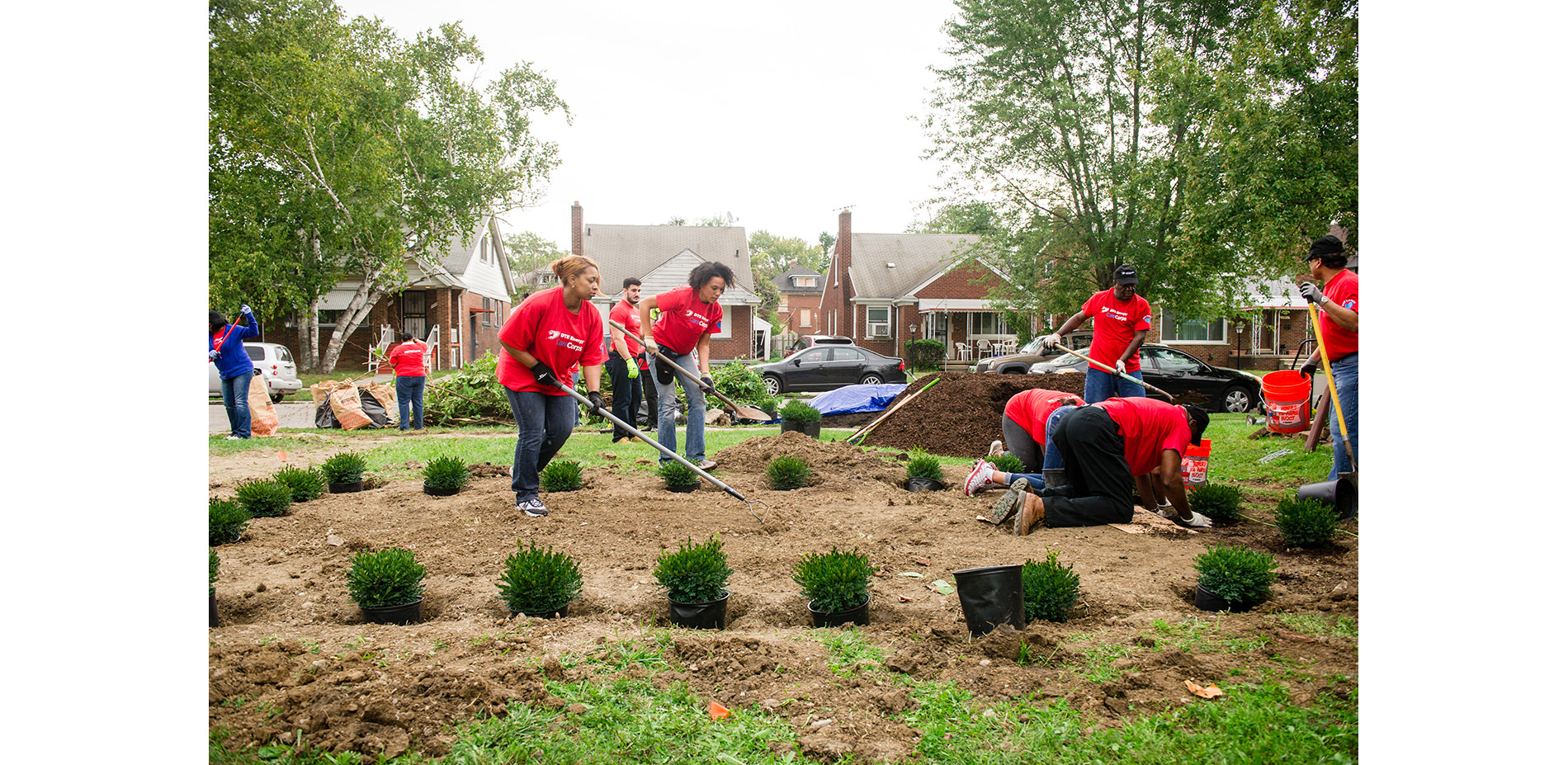
The approach of the Field Guide is to spur vacant land transformation and land stewardship in Detroit by connecting residents, organizations, and businesses without direct access to a landscape architect to the resources for taking informed action.
Photo Credit: Andrew Potter
Media: Please submit high-resolution image requests to images@asla.org.
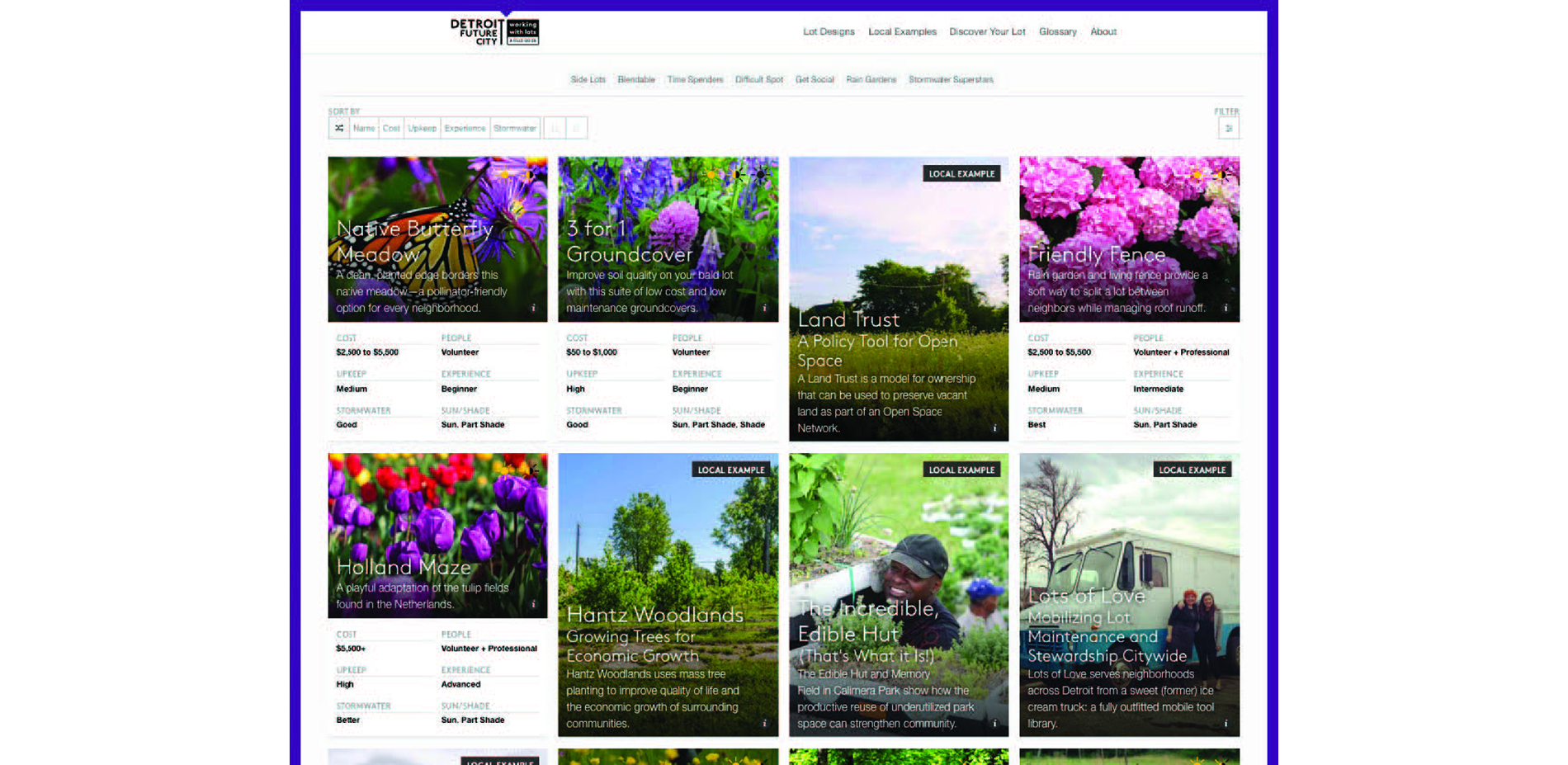
Launched primarily as a website, the Field Guide was developed through a yearlong, multi-stakeholder engagement process, with active participation by over 50 Detroit-based businesses and organizations.
Photo Credit: Andrew Potter
Media: Please submit high-resolution image requests to images@asla.org.
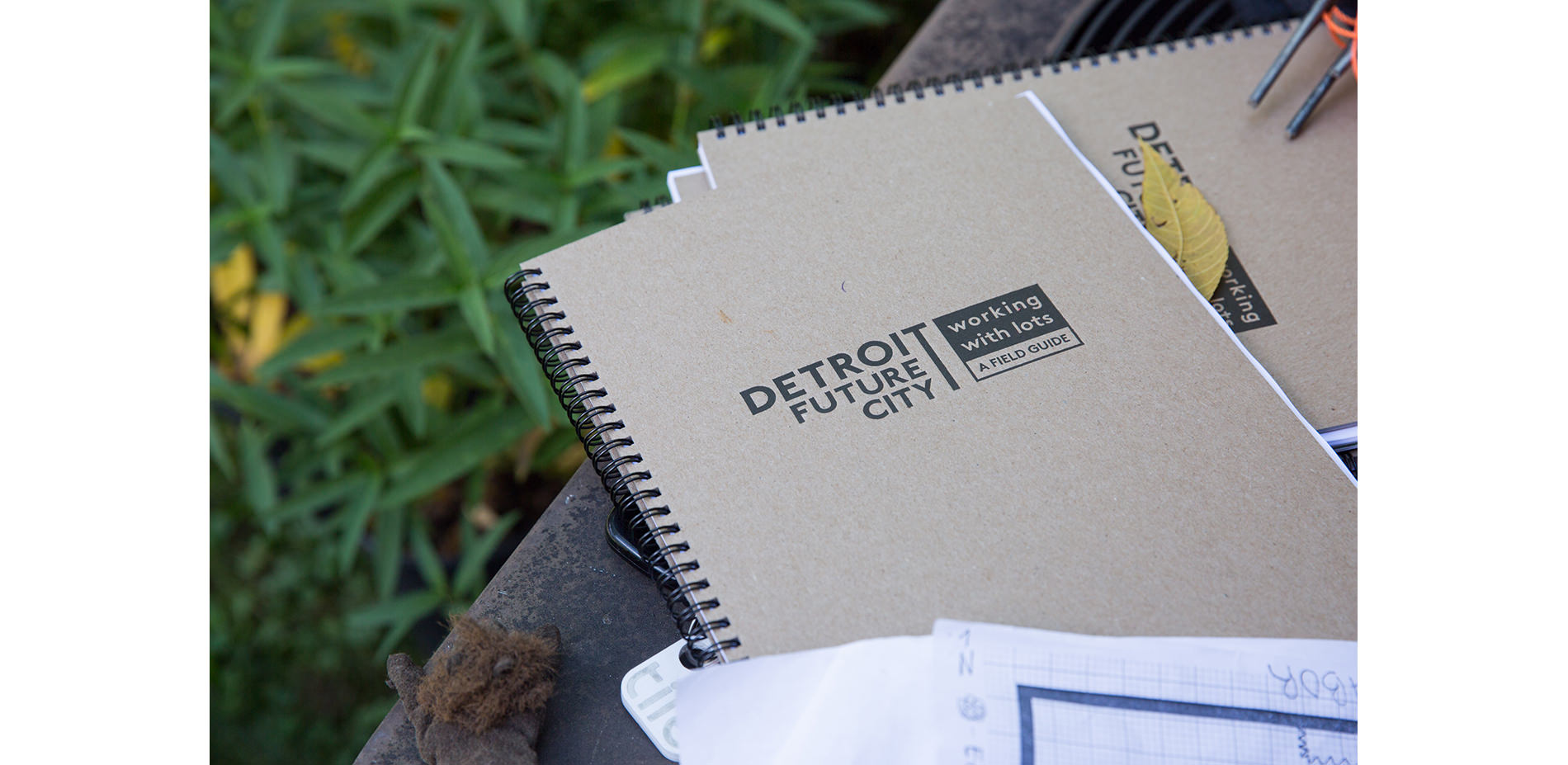
The printed companion to the Field Guide website is a hands-on, exploratory workbook created for residents acting alone or in collaboration to explore land transformation projects.
Photo Credit: Andrew Potter
Media: Please submit high-resolution image requests to images@asla.org.
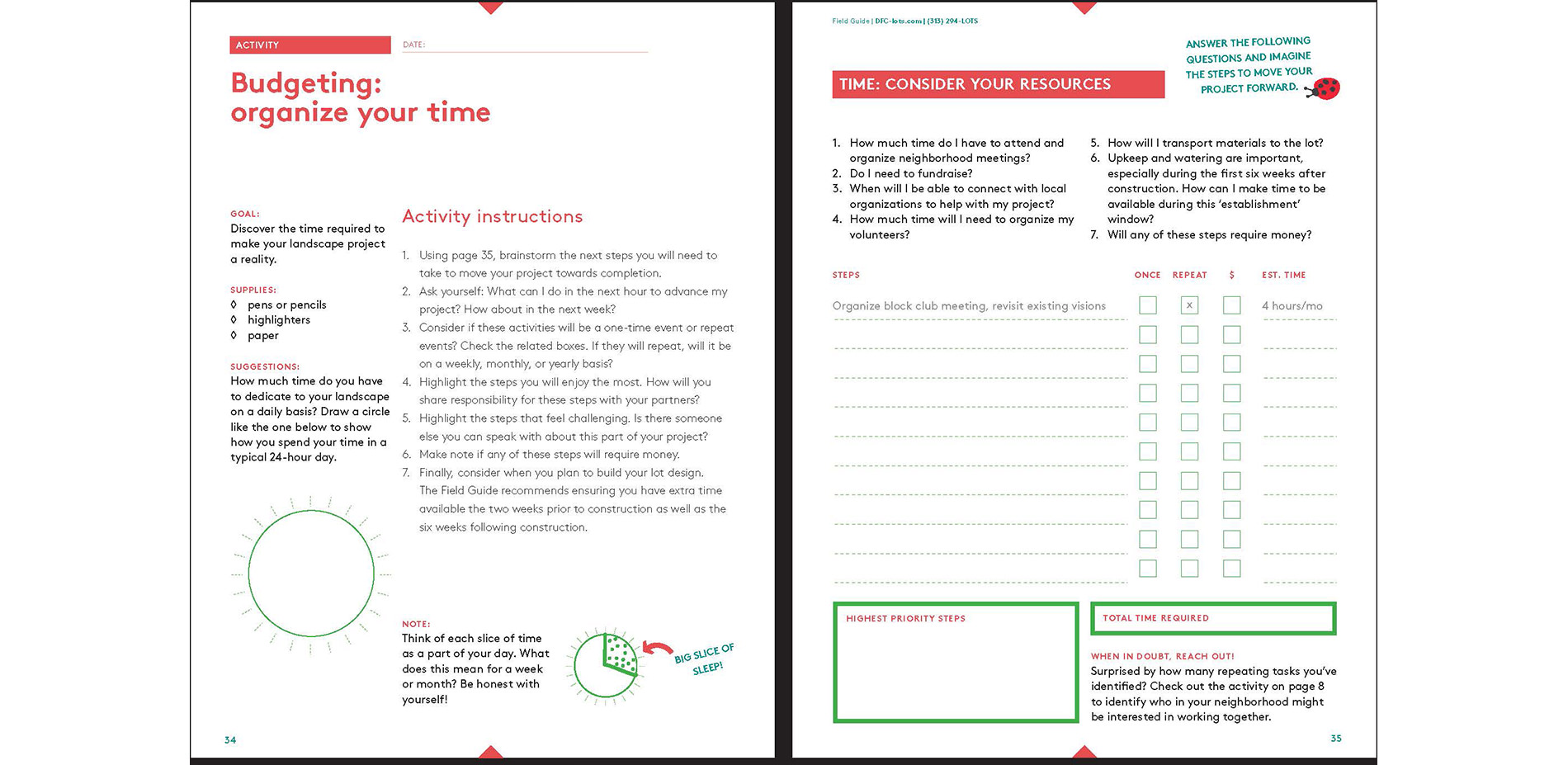
A sample activity from the Get Organized section of the workbook encourages participants to consider the required time and money to organize a volunteer-lead group project.
Photo Credit: Andrew Potter
Media: Please submit high-resolution image requests to images@asla.org.
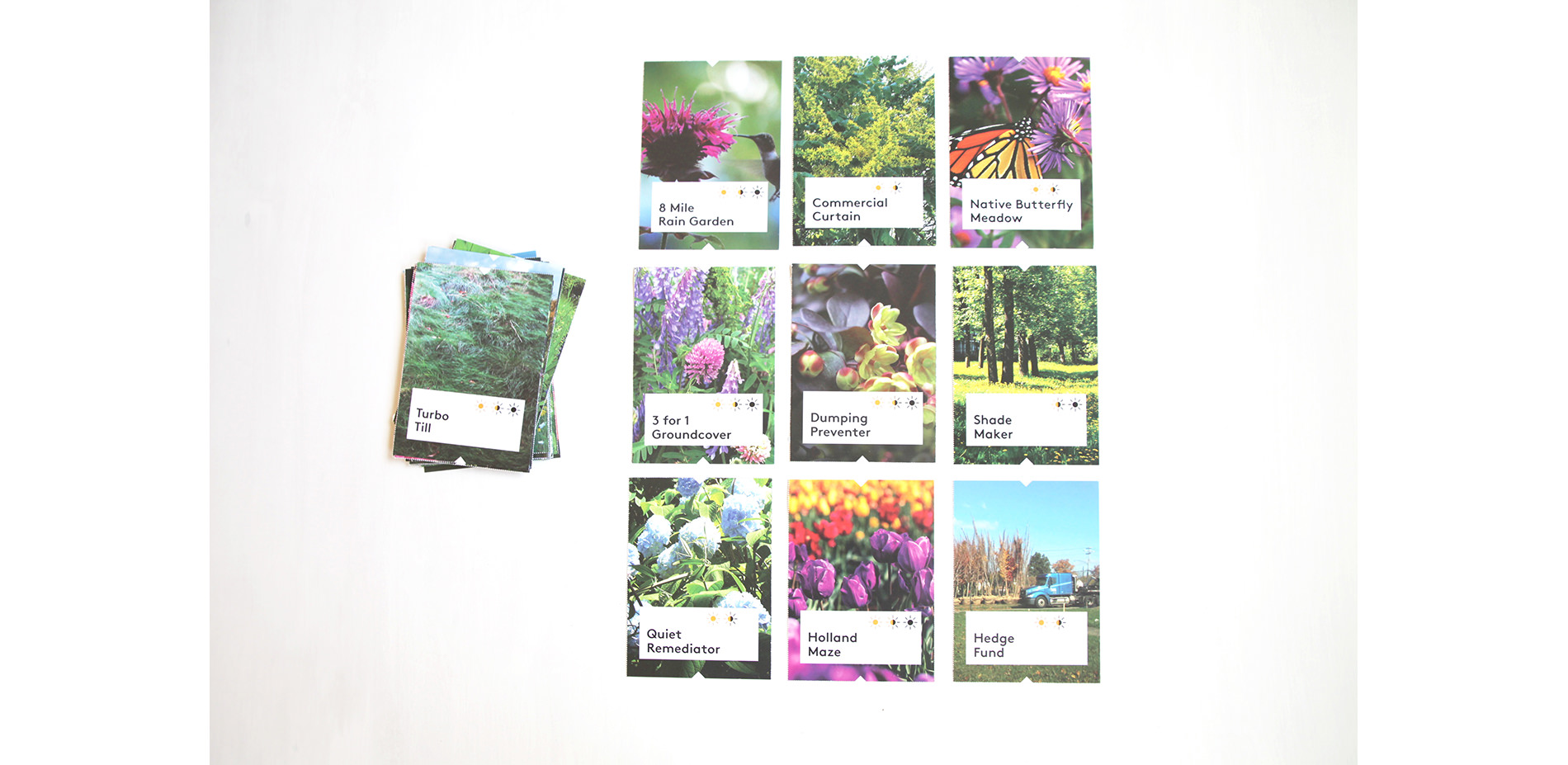
The workbook includes a deck of tear-out trading cards representing each of the 34 designs in the Field Guide. Two activities in the workbook aim to engage residents with an analog exploration of the online catalog of design options.
Photo Credit: Andrew Potter
Media: Please submit high-resolution image requests to images@asla.org.
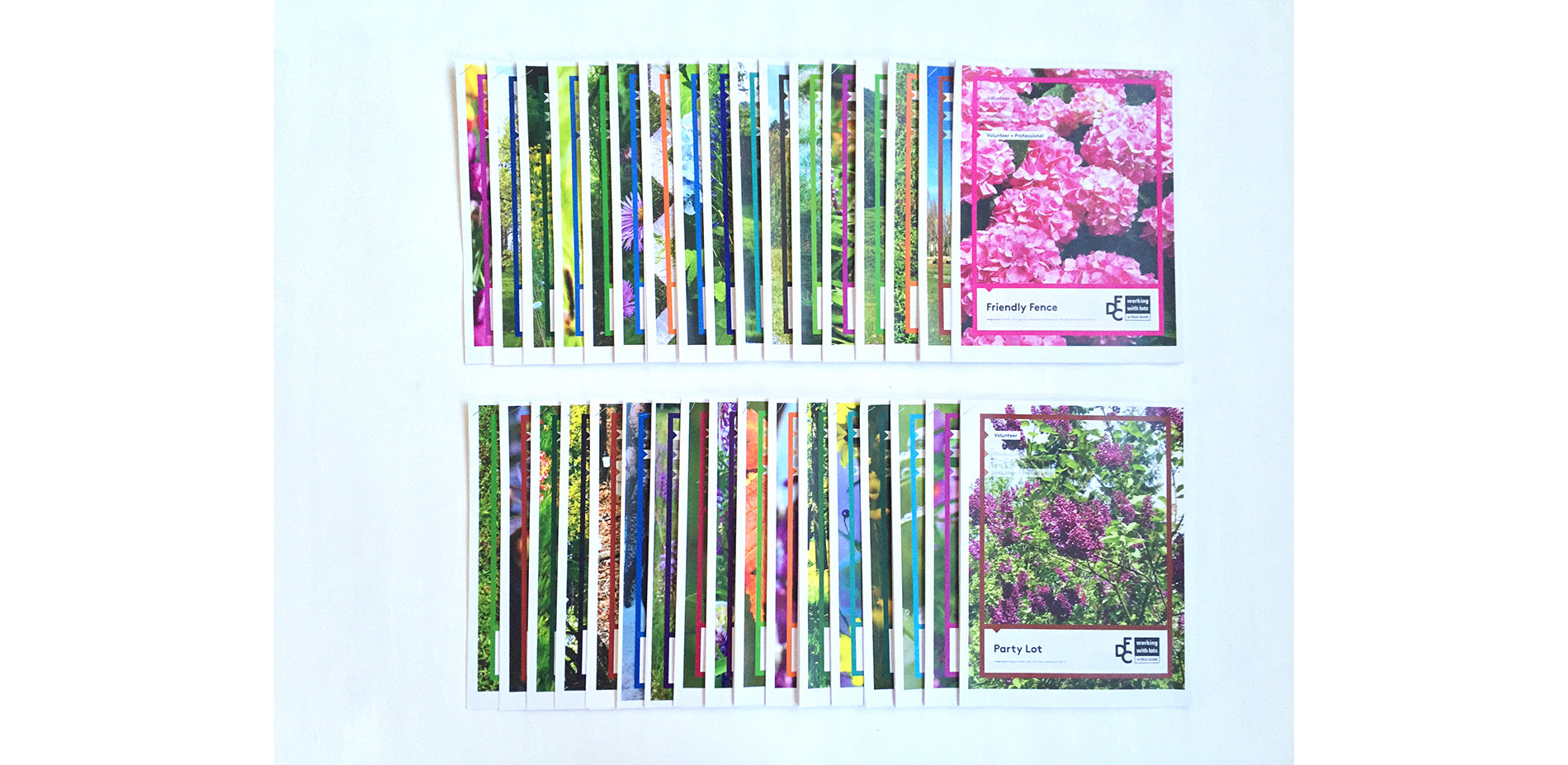
Each of the 34 designs include accessibly described, step-by-step instructions for site preparation and construction, a shopping list, site plan and planting plan.
Photo Credit: Andrew Potter
Media: Please submit high-resolution image requests to images@asla.org.
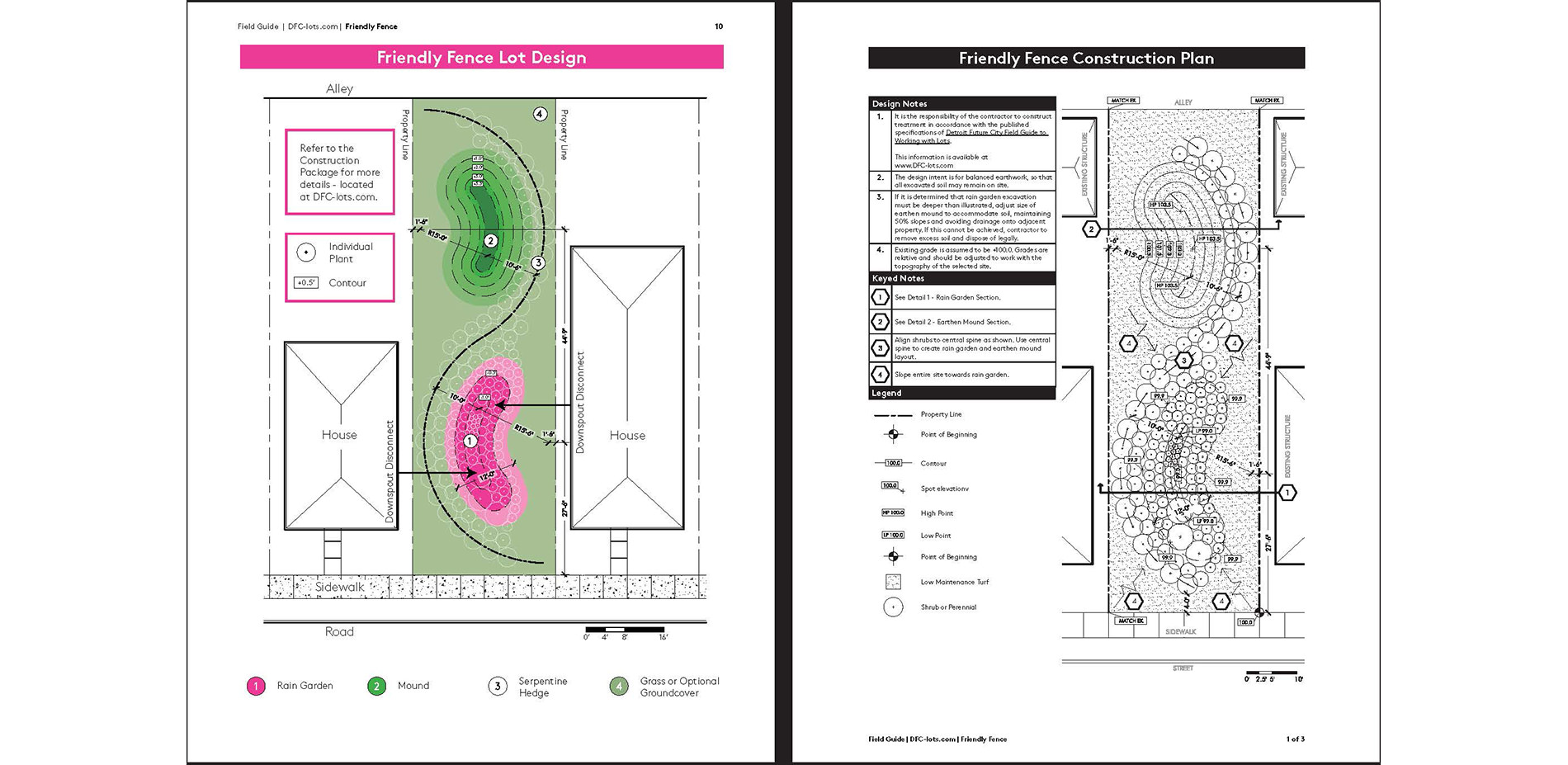
The designs in the Field Guide are described both for the general public (left) and for landscape contractors (right), to enable civic engagement, volunteer facilitated construction, and for the hiring of professionals when and where appropriate.
Photo Credit: Andrew Potter
Media: Please submit high-resolution image requests to images@asla.org.
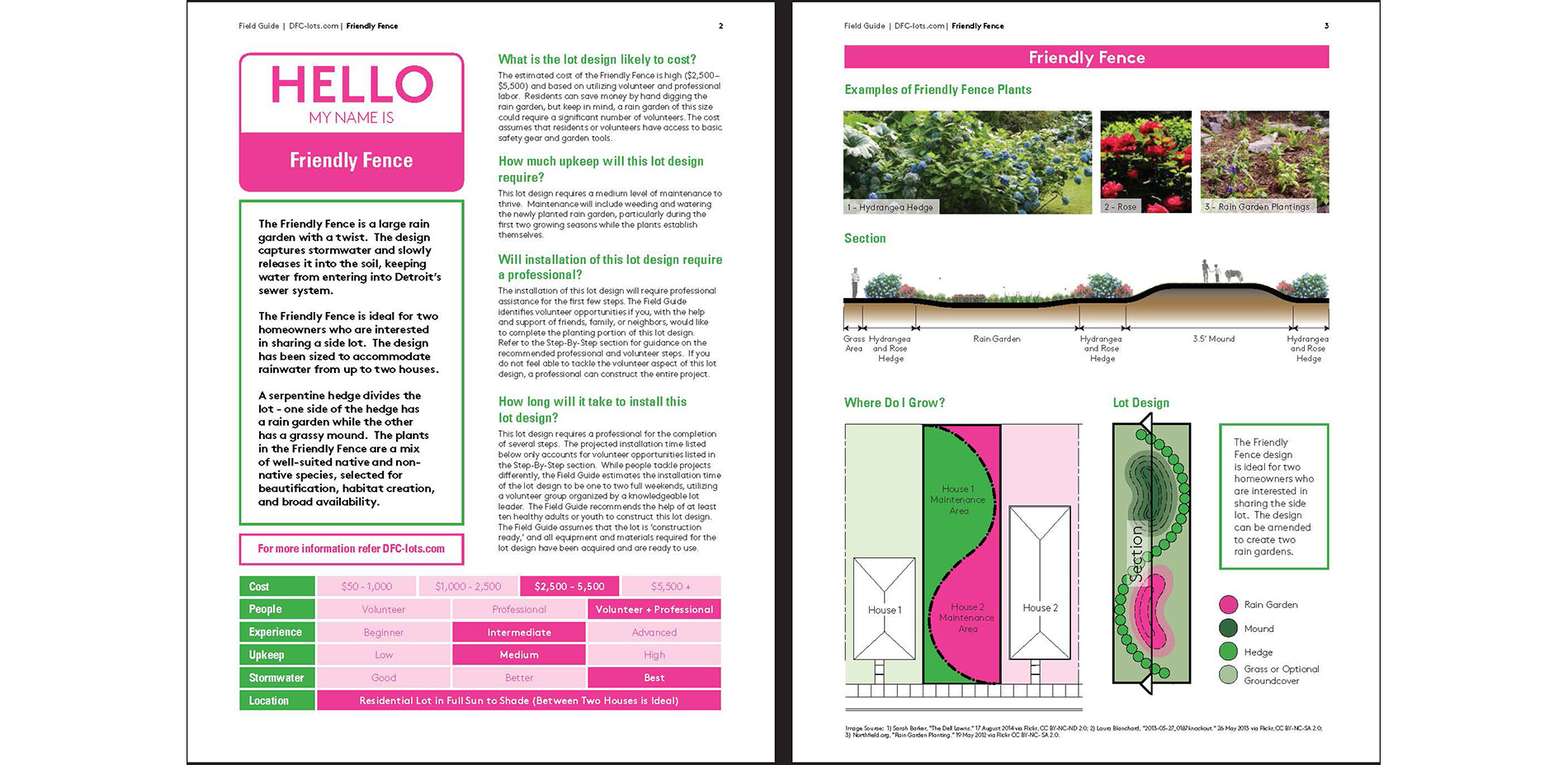
Overview pages from the printable Friendly Fence lot design.
Photo Credit: Andrew Potter
Media: Please submit high-resolution image requests to images@asla.org.
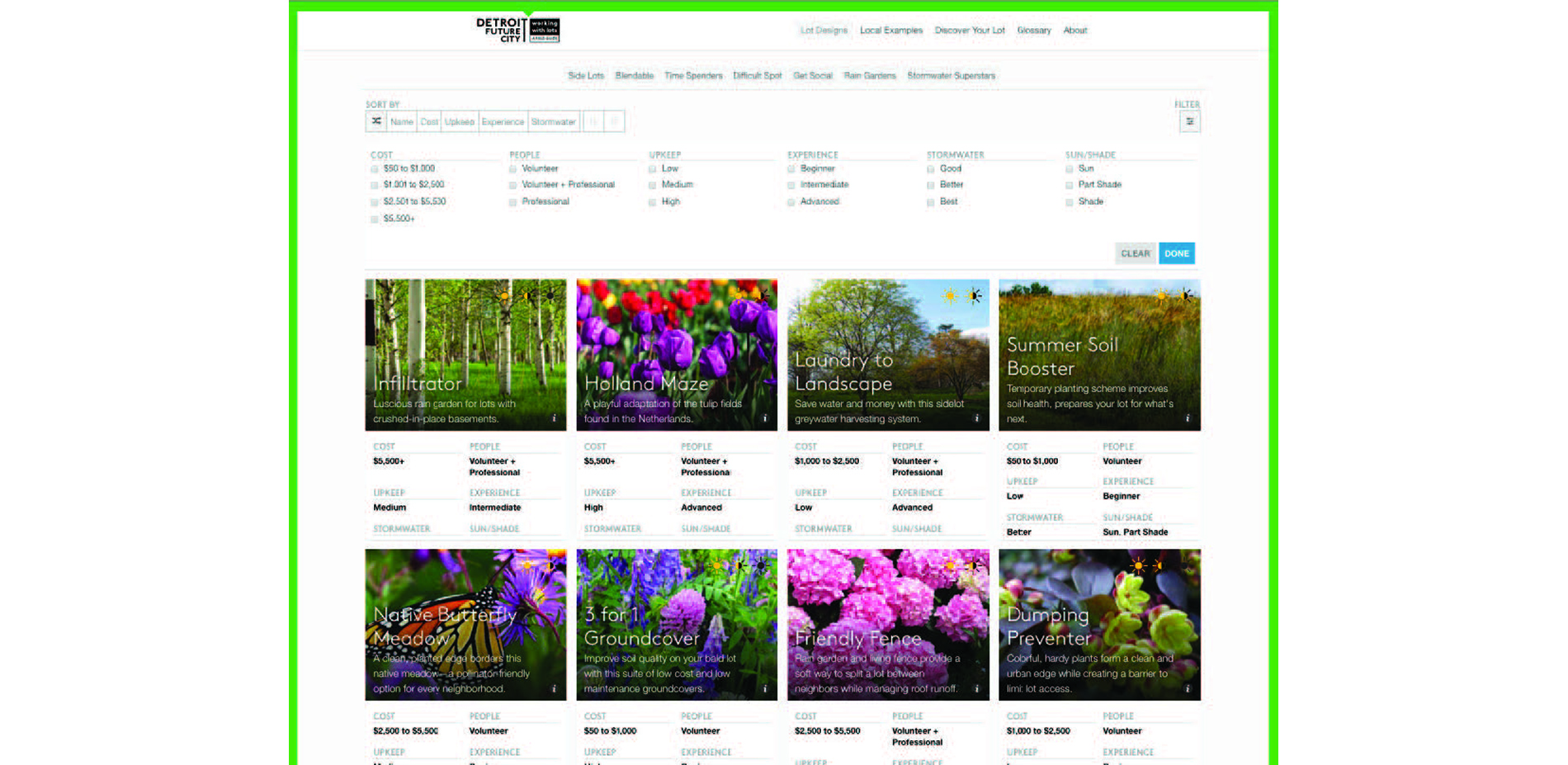
Attributes of the lot designs such as required maintenance or upkeep level, price, and stormwater benefit can be filtered dynamically on the project website.
Photo Credit: Andrew Potter
Media: Please submit high-resolution image requests to images@asla.org.
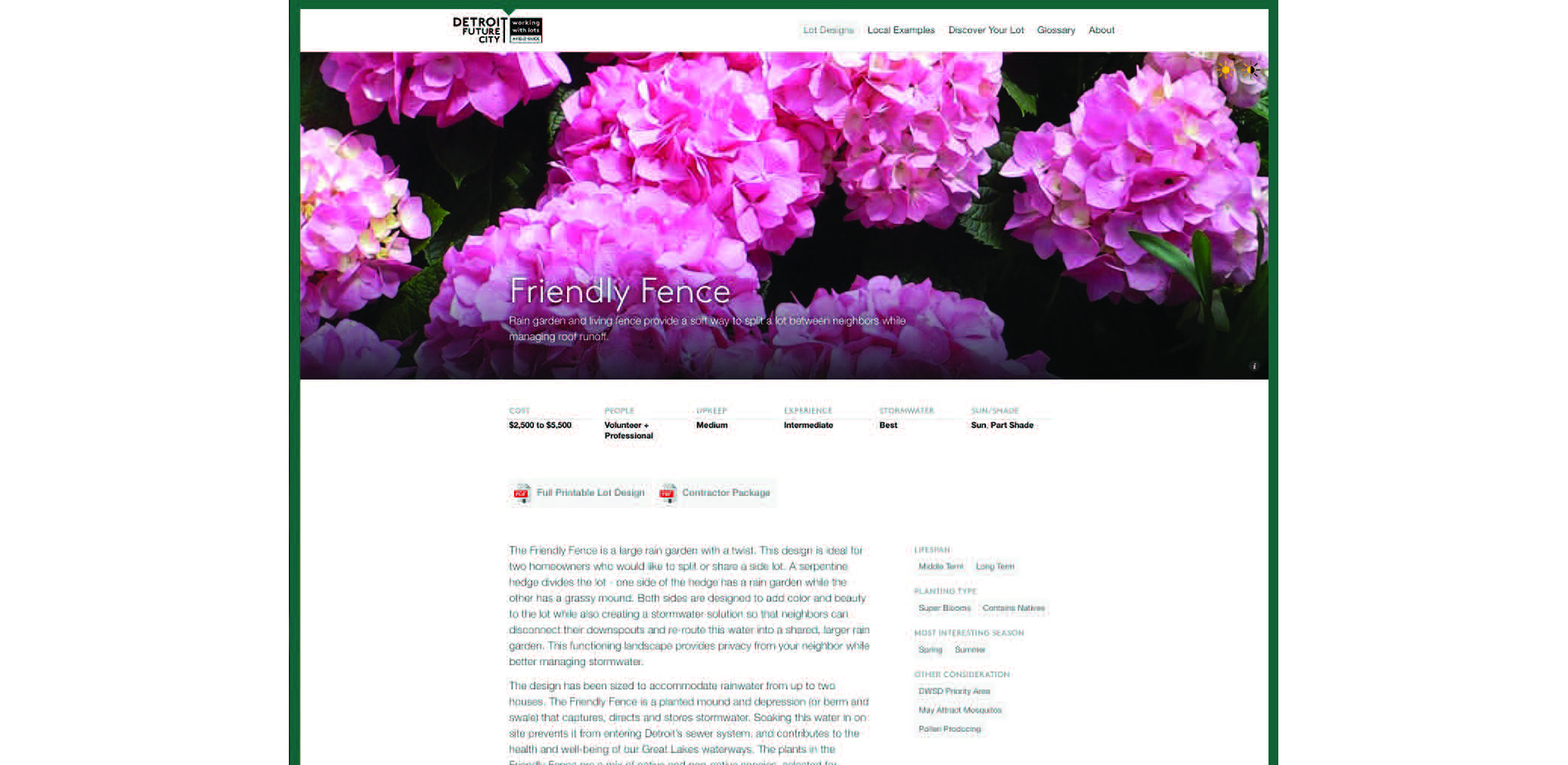
The content on the website describing each of the lot designs is complementary but not redundant of the content in the full printable lot designs.
Photo Credit: Andrew Potter
Media: Please submit high-resolution image requests to images@asla.org.
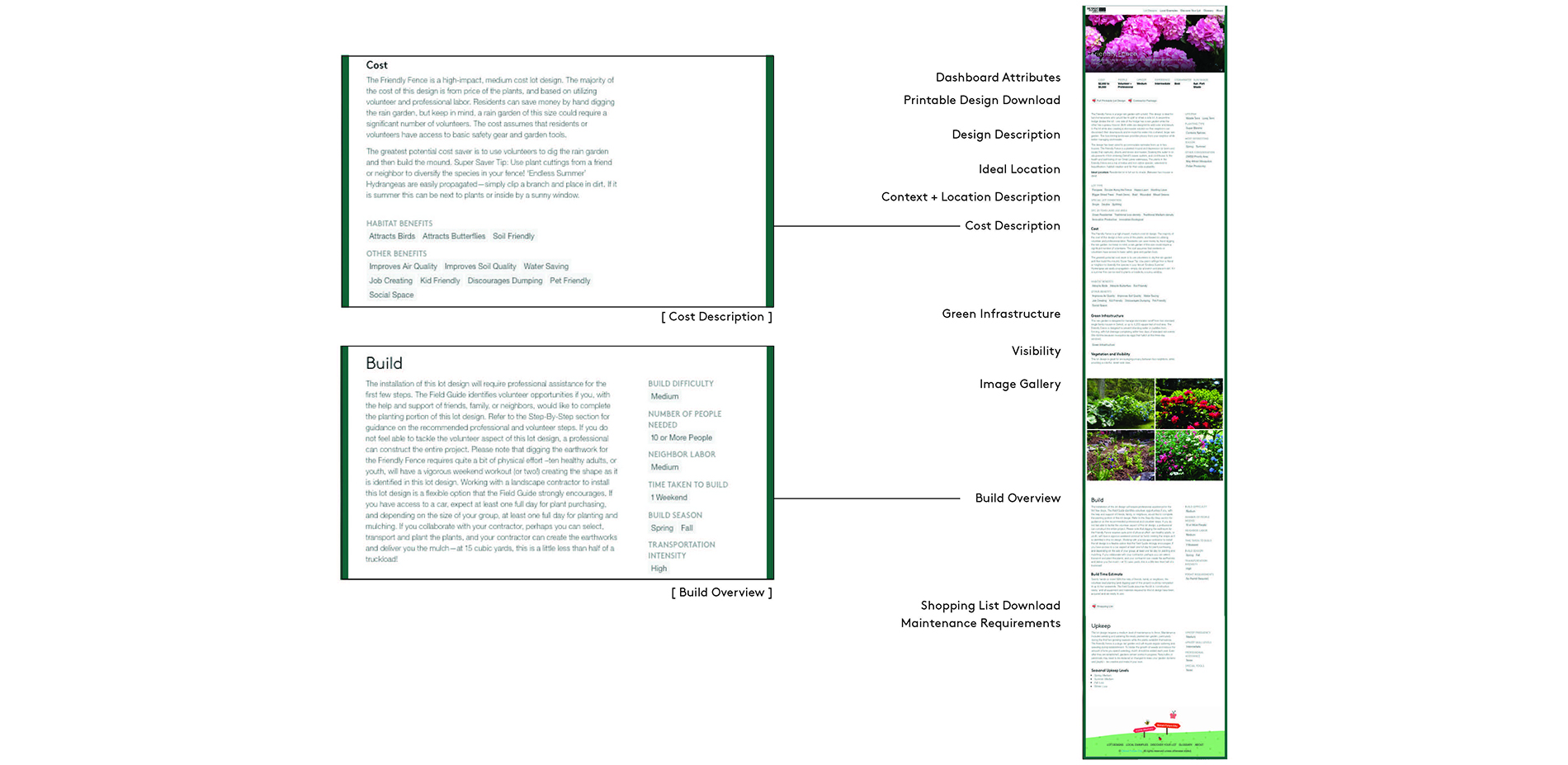
Full view of the Friendly Fence lot design as described on the website.
Photo Credit: Andrew Potter
Media: Please submit high-resolution image requests to images@asla.org.
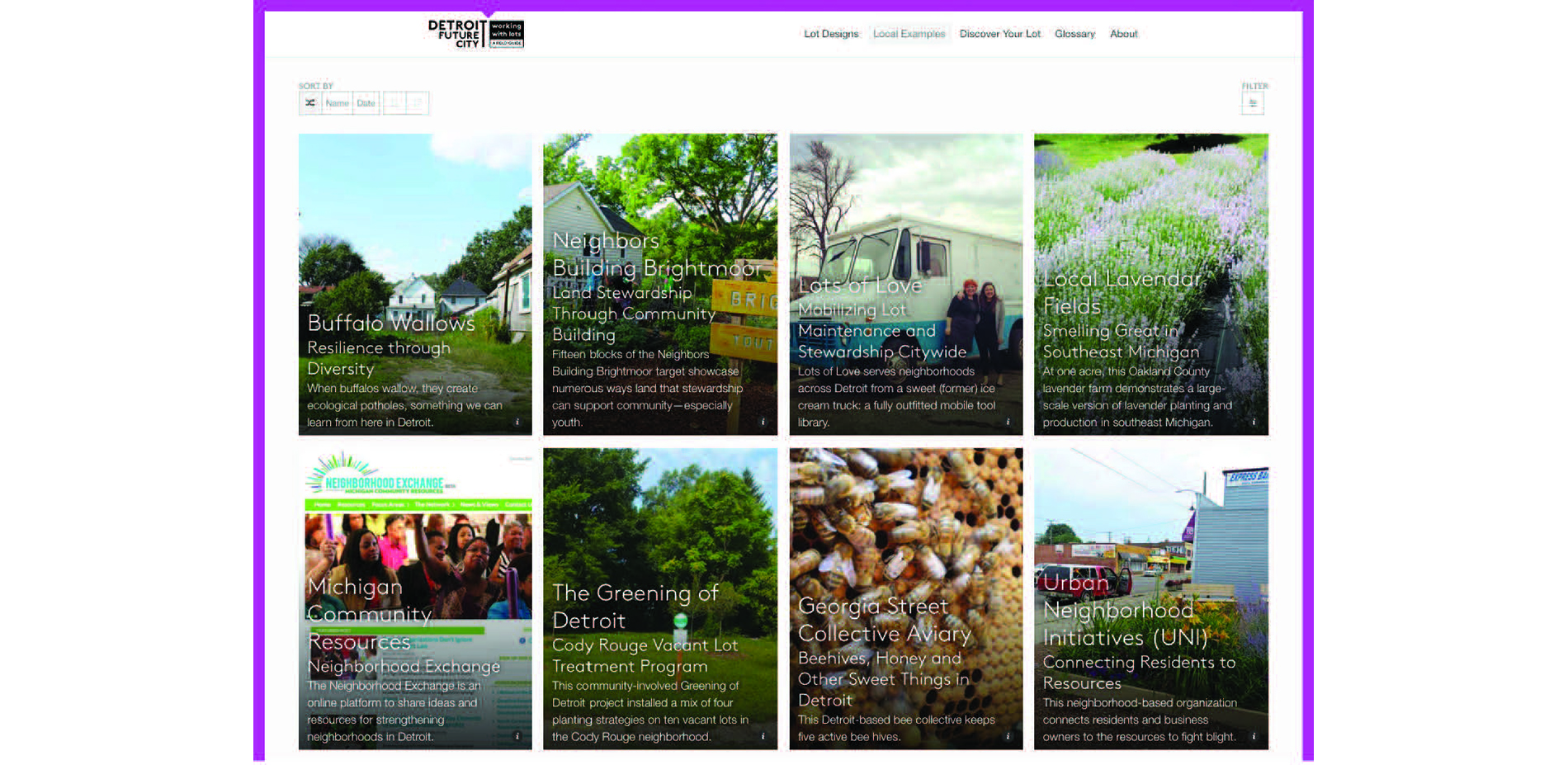
Local Examples on the website offer profiles of projects, programs, and people working to transform vacant land into an asset.
Photo Credit: Andrew Potter
Media: Please submit high-resolution image requests to images@asla.org.
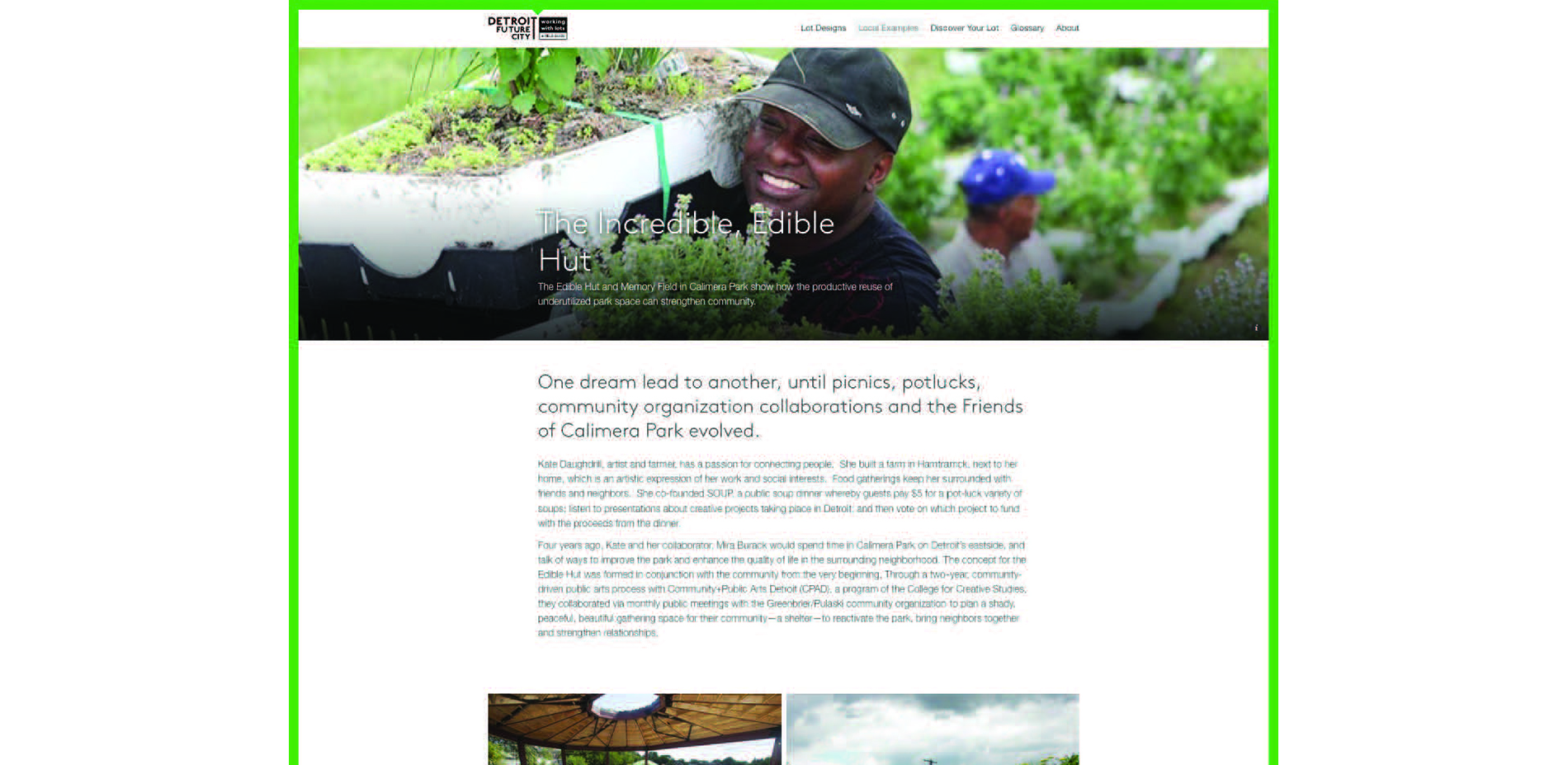
Local Examples provide uplifting, inspirational content, while encouraging users to reach out and connect with existing resources, leaders and low-cost learning opportunities available locally in Detroit.
Photo Credit: Andrew Potter
Media: Please submit high-resolution image requests to images@asla.org.
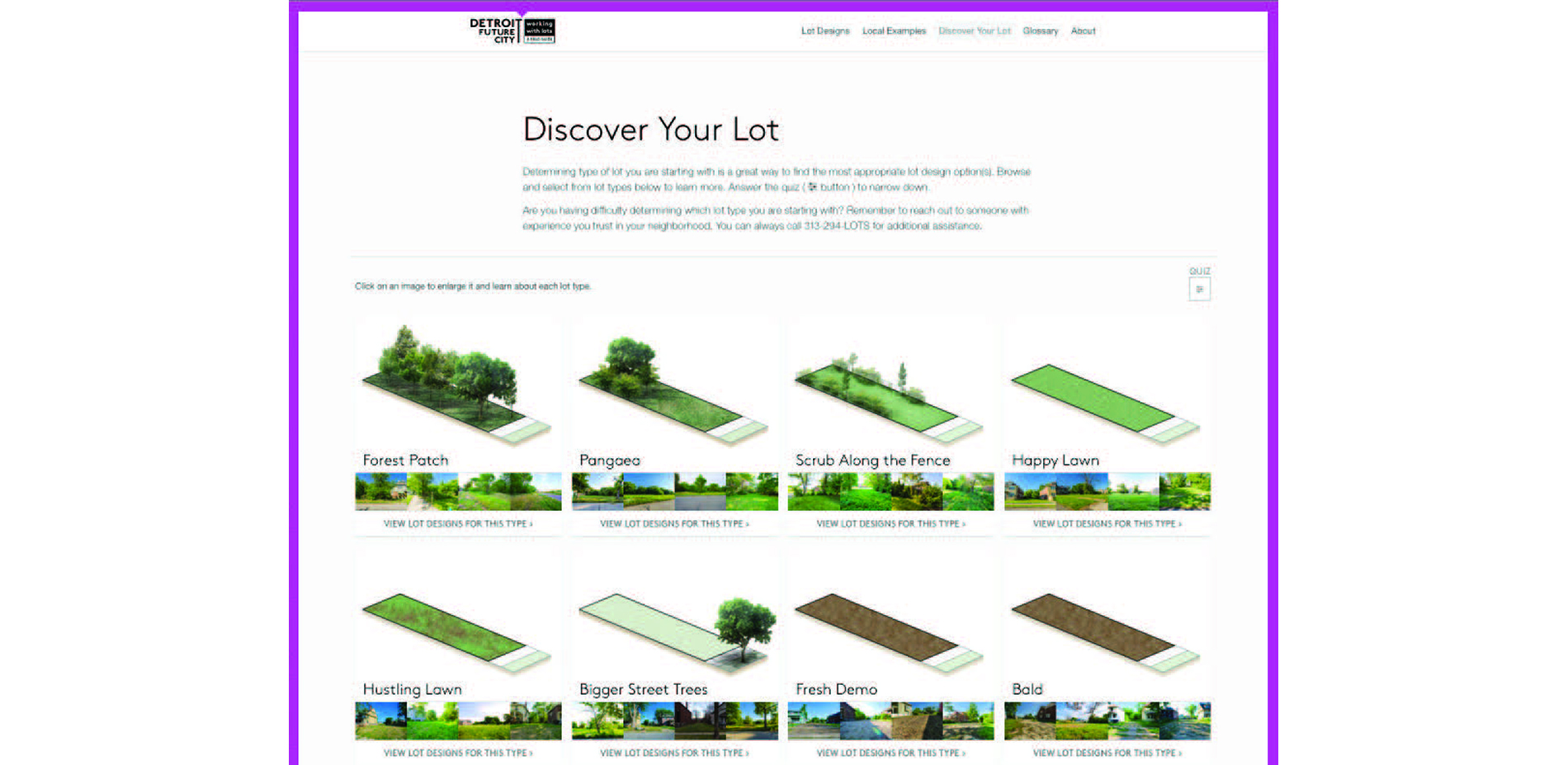
Dynamic tools on www.DFC-lots.com complement the exploratory site evaluation activities in the workbook.
Photo Credit: Andrew Potter
Media: Please submit high-resolution image requests to images@asla.org.
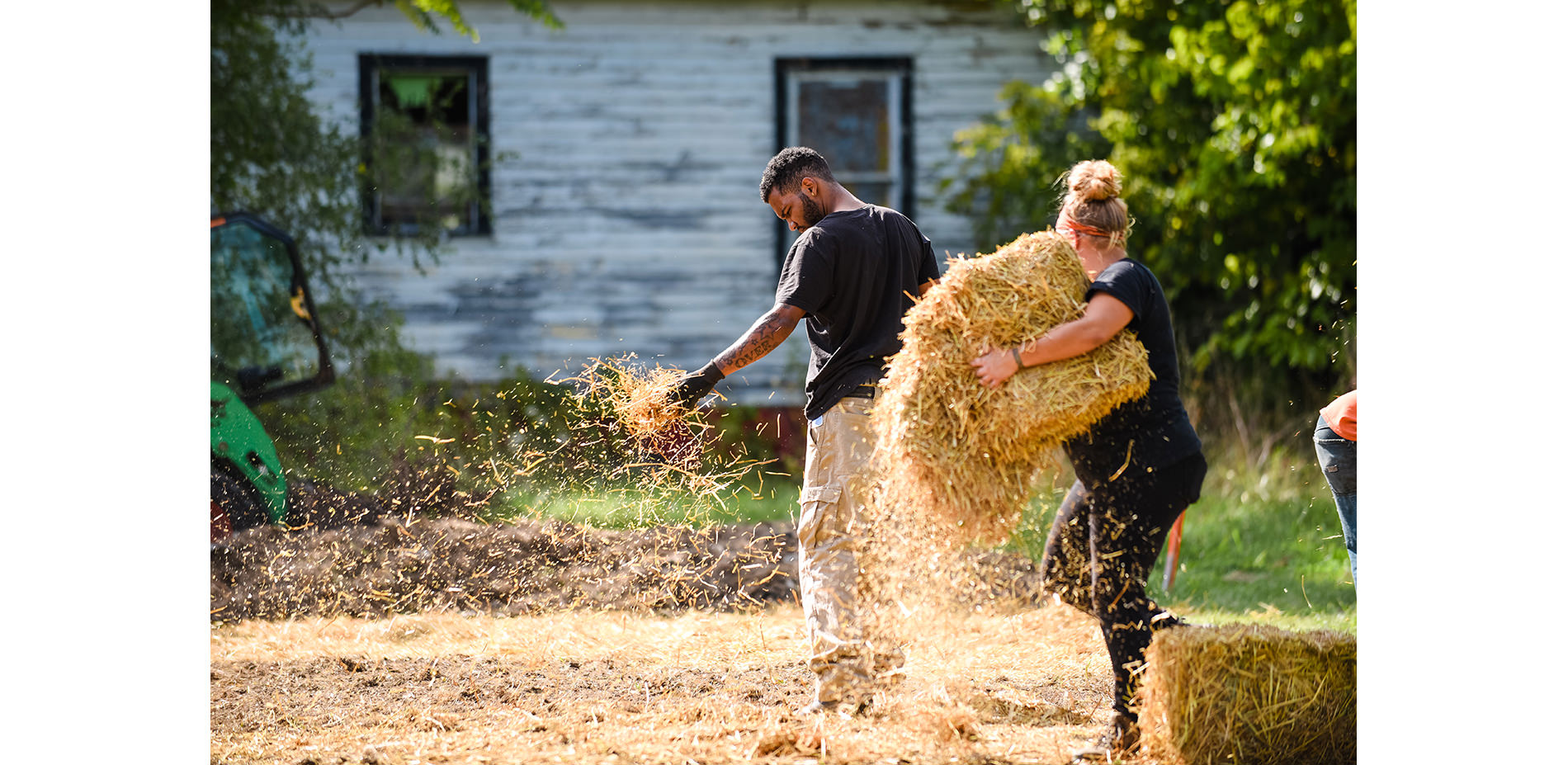
Volunteers complete an installation of the Turbo Till lot design on Detroit’s east side.
Photo Credit: Andrew Potter
Media: Please submit high-resolution image requests to images@asla.org.


















